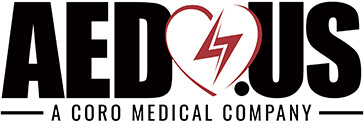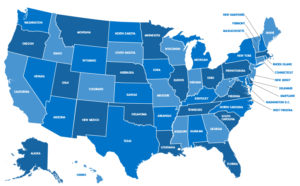 As a mother of 2, there are many what if scenarios that pop into my head about my children’s health and safety.
As a mother of 2, there are many what if scenarios that pop into my head about my children’s health and safety.
*Should they really be doing back flips on that trampoline?
*What’s going to happen if he’s bouncing on that exercise ball right next to the stairs leading down?
*Do they look right and left every time before crossing the street?
I try not to obsess, since most of their past injuries and trips to the ER have been completely out of my control. I have no control over what happens when they are at school either. What I can control is whether their school faculty and staff are well prepared for the unexpected and serious emergencies.
Out of the hundreds of diseases, conditions, and injuries we are told to watch for, Sudden Cardiac Arrest, or SCA, is something we hardly ever hear or talk about, unless we see something on the news or it happens to someone close to us. SCA occurs more often as people get older, but it can strike young children and adolescents without prior warning signs.
Here are a few statistics:
The American Heart Association (AHA) estimates that there are approximately 16,000 people under the age of 25 that experience Cardiac Arrest annually. And it happens to be the leading cause of deaths in young athletes with about 25% occurring during sports and athletic conditioning events. Males are more likely to experience SCA and more than two-thirds of the young athletes that have died suddenly were basketball and football players. Immediate and effective bystander CPR, along with the use of an Automatic External Defibrillator, can double or triple a victim’s chance of survival.
What causes SCA in children and adolescents?
SCA in young people is caused by an underlying heart condition or defect, asphyxiation, or an injury. Without blood flow and oxygen to the brain, permanent brain damage can start in as little as 4 minutes. Every parent and caregiver of children should learn CPR and how to use an AED. Education, preparation, and knowledge of where AED’s are located is key to helping save lives. According to AHA, 100,000 to 200,000 lives of children and adults could be saved each year if more people knew how to help.
Check to see if your child’s school has an AED on site
Not every U.S. state requires, or even recommends, that schools have an AED on site. Every second counts in the event of SCA. Once a call is placed to EMS, it may take paramedics 10 minutes or more to reach your child. Check your state laws here:
State Legislation on AED placement
Call your child’s school to see if they have an AED program in place. Reach out to your state representatives and let them know that this is a matter of life or death.
The AED at our school:
Our school has had an AED located in the nurses’ office for at least 5 years. Since our state does not require AEDs in school buildings, one was requested when a child with a known heart condition was enrolled at the time. It arrived the day after it was requested. We have at least 5 faculty members in the building that have been trained in CPR and how to use an AED. I hope that they never have to use it, but I feel confident knowing that my kids would get the help they needed, and safer knowing that it is there and rescue-ready.
We have at least 5 faculty members in the building that have been trained in CPR and how to use an AED. I hope that they never have to use it, but I feel confident knowing that my kids would get the help they needed, and safer knowing that it is there and rescue-ready.
 Written by Blaire Czarniecki
Written by Blaire Czarniecki
Customer Service Director
Fact checked by Phillip Woods, BA, NREMT-P, FP-C
Blaire attended the University of Tennessee where she graduated with a Bachelor of Science in Human Ecology- Child and Family Studies. She has been in the Automated External Defibrillator (AED) industry for over eight years and is the Director of Customer Service for Coro Medical. Blaire is also an American Red Cross-certified CPR/AED/First Aid Instructor, highly trained by each manufacturer on their specific AEDs, and knowledgeable regarding ALL State AED regulations and legislation.
“I know that every day I come to work, I am playing a part in saving someone’s life. I am passionate about these devices and am always looking for new and innovative ways to spread awareness and knowledge about Sudden Cardiac Arrest (SCA). I look forward to the day when everywhere I go, I will see an AED—when SCA will no longer take any lives.”
Last updated March 16, 2018






